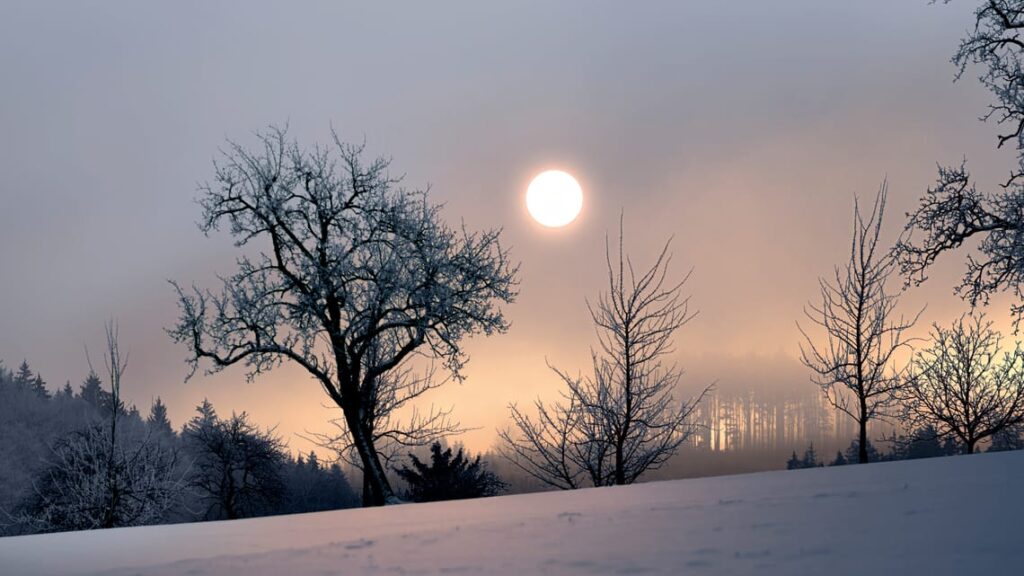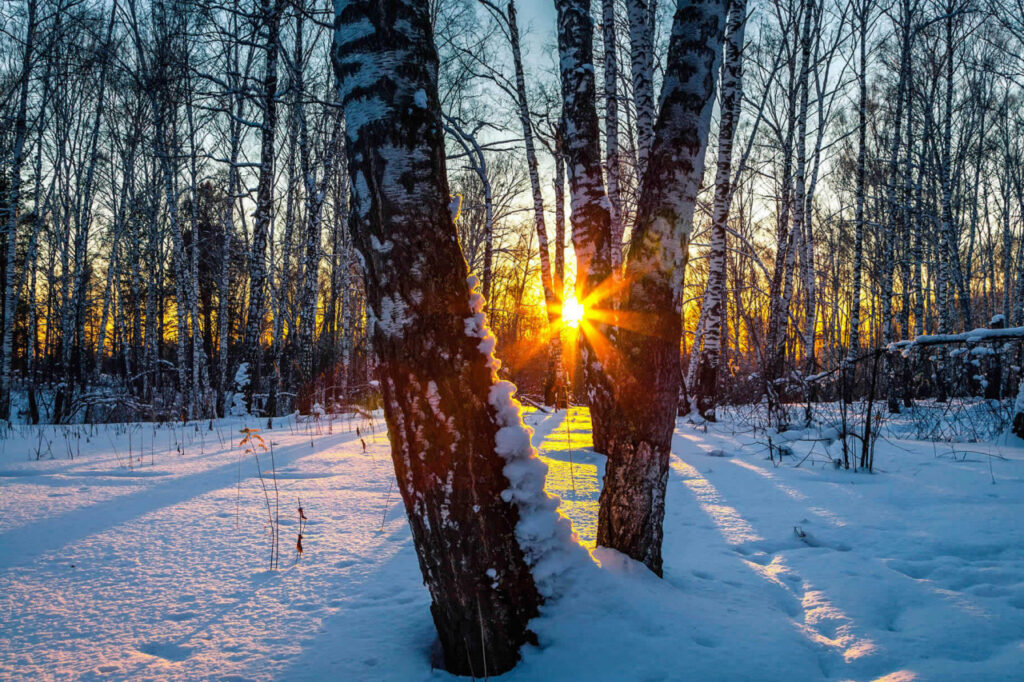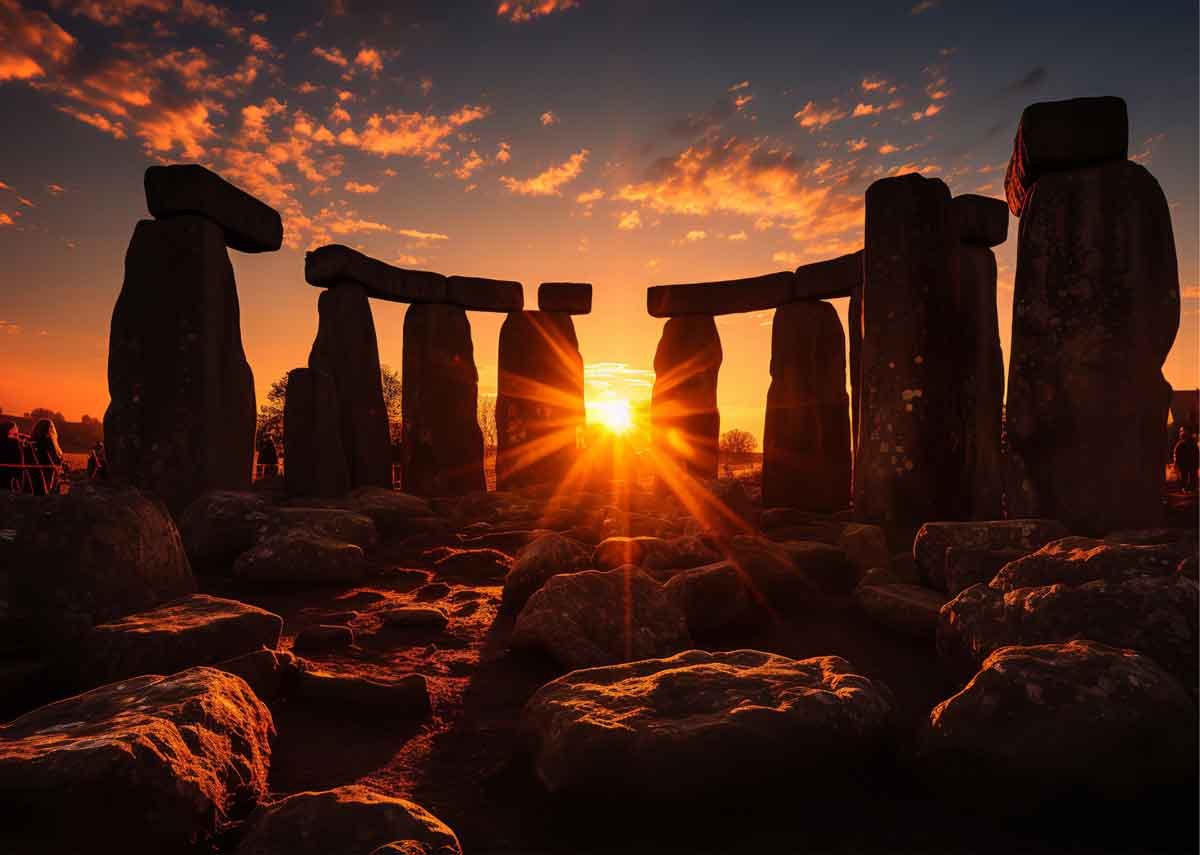The winter solstice, an astronomical phenomenon that occurs once a year, has fascinated and inspired humans for millennia. As the shortest day and longest night of the year, the winter solstice holds significant cultural, spiritual, and scientific importance across various civilizations. This article delves into the winter solstice, exploring its astronomical basis, historical significance, cultural traditions, and the scientific phenomena associated with this pivotal event.
Astronomical Basis of the Winter Solstice

The winter solstice occurs when one of Earth’s poles has its maximum tilt away from the Sun. This happens twice a year, once in each hemisphere. In the Northern Hemisphere, it typically falls on December 21 or 22, while in the Southern Hemisphere, it occurs on June 20 or 21. The term “solstice” is derived from the Latin words “sol” (sun) and “sistere” (to stand still), referring to the apparent halt in the Sun’s path across the sky.
During the winter solstice, the Sun travels the shortest path through the sky, resulting in the least amount of daylight and the longest night. The precise timing of the solstice can vary each year due to the Earth’s elliptical orbit and axial tilt. The axial tilt of approximately 23.5 degrees is responsible for the varying intensity of sunlight and the changing seasons.
Historical and Cultural Significance
The winter solstice has been observed and celebrated by numerous cultures throughout history. Ancient civilizations recognized its importance and often aligned their architectural structures with the solstice’s celestial events. These observances were deeply intertwined with agricultural cycles, religious rituals, and social customs.
Stonehenge and Newgrange
One of the most famous monuments associated with the winter solstice is Stonehenge in England. This prehistoric structure, built around 3000 BCE, is aligned with the solstices. During the winter solstice, the Sun sets in alignment with the central Altar Stone and the Slaughter Stone, creating a stunning visual effect that draws thousands of visitors each year.
Similarly, Newgrange in Ireland, constructed around 3200 BCE, is a passage tomb designed to capture the light of the rising Sun on the winter solstice. The sunlight floods the inner chamber, illuminating the intricate carvings and creating a profound experience for those who witness it.
Ancient Rome
In ancient Rome, the winter solstice was celebrated with the festival of Saturnalia, dedicated to Saturn, the god of agriculture and time. Saturnalia was marked by feasting, gift-giving, and a temporary reversal of social roles, where slaves were treated as equals to their masters. This festival influenced many modern holiday traditions, including Christmas.
Scandinavian Yule

The Norse people of Scandinavia celebrated Yule during the winter solstice. Yule was a time to honor the return of the Sun and involved various rituals, including the lighting of the Yule log. The log was burned to symbolize the rebirth of the Sun, and its ashes were kept as a protective charm. Many of these Yule traditions have been integrated into contemporary Christmas celebrations.
Indigenous Cultures
Indigenous cultures across the Americas also held the winter solstice in high regard. For example, the Hopi people of the American Southwest celebrate Soyal, a solstice ceremony that includes rituals to welcome the Sun’s return and ensure fertility and harmony for the coming year.
Modern Observances
In contemporary times, the winter solstice continues to be observed and celebrated in various ways. Many people participate in solstice gatherings, bonfires, and festivals to mark the occasion. These celebrations often emphasize themes of renewal, reflection, and connection with nature.
Scientific Phenomena and Impact
The winter solstice has significant implications for understanding Earth’s movements and the science of astronomy. It marks a crucial point in Earth’s annual orbit around the Sun and offers insights into the mechanics of our solar system.
The Earth’s Tilt and Seasons
The Earth’s axial tilt is the primary reason we experience seasons. During the winter solstice, the North Pole is tilted furthest away from the Sun, resulting in the shortest day of the year for the Northern Hemisphere. Conversely, the South Pole is tilted towards the Sun, experiencing the longest day and marking the summer solstice in the Southern Hemisphere.
This tilt and the resulting variation in sunlight play a critical role in regulating Earth’s climate and ecosystems. Understanding the solstices helps scientists study patterns of daylight, temperature changes, and their effects on the environment.
Solar Observatories and Research
Modern science has built upon the knowledge of ancient astronomers who used the solstices to track time and seasons. Solar observatories around the world, such as the Mauna Loa Observatory in Hawaii and the McMath-Pierce Solar Telescope in Arizona, study the Sun’s behavior, including solar flares and sunspots. These observations are crucial for understanding space weather and its impact on Earth.
The Solstice and Human Health

The winter solstice also has implications for human health and well-being. The reduced daylight during winter months can lead to seasonal affective disorder (SAD), a type of depression that occurs at specific times of the year. Light therapy, involving exposure to bright artificial light, is often used to treat SAD by mimicking natural sunlight.
Additionally, the solstice period offers an opportunity for reflection yowestogel login and mindfulness. Many people use this time to set intentions, meditate, and engage in practices that promote mental and emotional well-being.
Cultural Reflections and Contemporary Practices
The winter solstice’s cultural and scientific significance continues to inspire contemporary practices and reflections. Many individuals and communities incorporate solstice traditions into their winter celebrations, blending ancient customs with modern sensibilities.
Spiritual and Personal Growth
For many, the winter solstice represents a time of introspection and spiritual renewal. The symbolism of darkness giving way to light resonates deeply, encouraging personal growth and transformation. Practices such as meditation, journaling, and setting intentions are popular ways to harness the solstice’s energy for self-improvement.
Community and Connection
Solstice celebrations often emphasize community and connection. Gathering with loved ones around a bonfire, sharing a meal, or participating in group activities fosters a sense of belonging and solidarity. These communal experiences help reinforce the bonds that sustain us through the colder, darker months.
Environmental Awareness
The winter solstice also serves as a reminder of our connection to the natural world. Many contemporary observances include activities that promote environmental awareness and sustainability. Planting trees, participating in nature walks, and engaging in conservation efforts are ways to honor the Earth’s cycles and contribute to its preservation.
Conclusion
The winter solstice is a multifaceted event that encompasses astronomical precision, historical depth, cultural richness, and scientific inquiry. Its significance extends beyond mere celestial mechanics, touching upon themes of renewal, reflection, and our relationship with the natural world. Whether observed through ancient rituals, modern celebrations, or scientific study, the winter solstice remains a powerful symbol of the interplay between light and darkness, marking a pivotal moment in the Earth’s annual journey around the Sun.
Read More Article About “Paula Fernandes: Brazil’s Country Music Star and Cultural“

